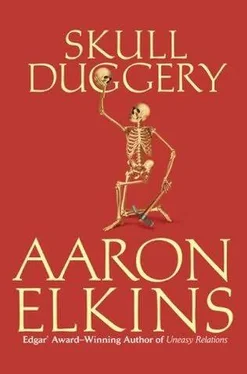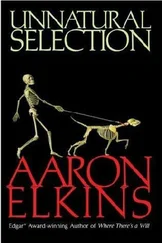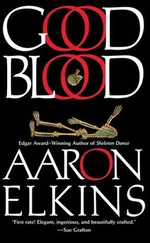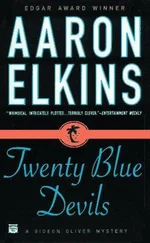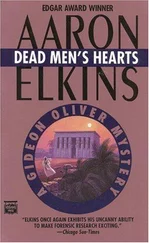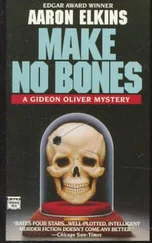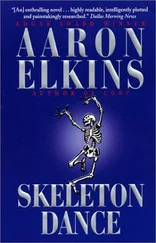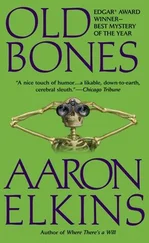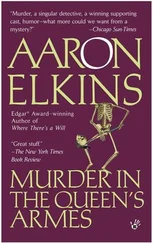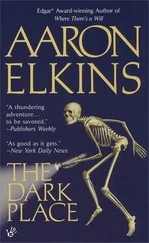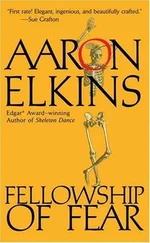Aaron Elkins - Skull Duggery
Здесь есть возможность читать онлайн «Aaron Elkins - Skull Duggery» весь текст электронной книги совершенно бесплатно (целиком полную версию без сокращений). В некоторых случаях можно слушать аудио, скачать через торрент в формате fb2 и присутствует краткое содержание. Жанр: Классический детектив, на английском языке. Описание произведения, (предисловие) а так же отзывы посетителей доступны на портале библиотеки ЛибКат.
- Название:Skull Duggery
- Автор:
- Жанр:
- Год:неизвестен
- ISBN:нет данных
- Рейтинг книги:4 / 5. Голосов: 1
-
Избранное:Добавить в избранное
- Отзывы:
-
Ваша оценка:
- 80
- 1
- 2
- 3
- 4
- 5
Skull Duggery: краткое содержание, описание и аннотация
Предлагаем к чтению аннотацию, описание, краткое содержание или предисловие (зависит от того, что написал сам автор книги «Skull Duggery»). Если вы не нашли необходимую информацию о книге — напишите в комментариях, мы постараемся отыскать её.
Skull Duggery — читать онлайн бесплатно полную книгу (весь текст) целиком
Ниже представлен текст книги, разбитый по страницам. Система сохранения места последней прочитанной страницы, позволяет с удобством читать онлайн бесплатно книгу «Skull Duggery», без необходимости каждый раз заново искать на чём Вы остановились. Поставьте закладку, и сможете в любой момент перейти на страницу, на которой закончили чтение.
Интервал:
Закладка:
With good reason, forensic anthropologists aren’t supposed to prefer any particular outcome of their investigations, but forensic anthropologists are as human as anybody else, and Gideon knew that the younger she was, the more his findings on sex differentiation and skeletal maturation would be at odds with each other. Bell-shaped curves notwithstanding, thirteen-year-old girls weren’t supposed to have pelvises like twenty-year-olds. There wasn’t much he could do about it except to warn himself in no uncertain terms that he was not to let what he preferred or didn’t prefer affect his analysis.
Having given himself a talking-to along these lines, he belatedly realized that his back needed a break. He got off the stool to stand up, work his shoulders, and massage the kinks out of his neck. He’d been crouched over the desk for over an hour now. Having borrowed one of the Hacienda’s vans, he had arrived at the Procuraduria a little before two, where he was received at the foot of the basement steps with full military honors-salute, clicked heels-by Donardo, the hulking cop who had been notably short on courtesies the day before. It was obvious that Marmolejo’s admonitions to Sergeant Nava had been promptly passed on down the line. Donardo had shown him to Marmolejo’s office for a cup of espresso and a leisurely chat before Gideon got down to work.
Now, wanting a breather for both body and mind, he walked down the hall to beg another coffee from Corporal Vela, Marmolejo’s adjutant, then returned with it to the bones. His aim was to come up with a probable age range of his own that would either confirm Orihuela’s estimate or refute it. The odds that he could do one or the other, and do it with confidence, were in his favor. The younger a person was, the more precisely his or her age could be determined from the skeleton. In a child under three it could often be narrowed down to a couple of months one way or the other. After thirty-five or forty, you’d have a hard time pinning it down to anything less than a ten-year range. But for a teenager, if you knew what you were doing and you had enough of the right bones in front of you (and Gideon thought he did in this case), you ought to be able to come up with a reliable-and defensible-age range of no more than three years, perhaps even two. That’s what he was shooting for.
The age of a person in her teens is established mostly by gauging the degree of growth in the long bones-the arms, legs, ribs, and collar bones. A bone grows, not simply by getting longer, but by having new bony material, epiphyses, deposited at both ends of the bone shaft. The epiphyses are made of cartilage to begin with, but with time they ossify and slowly fuse to the shaft. When the fusion is complete, the bone is done growing. And when the last epiphysis has fused to the last shaft, that’s it; you’re all “grown up.”
How long it takes from the time fusion begins until the time it’s complete and the segments are firmly, permanently attached varies from bone to bone, but for each individual bone the process moves forward through known, identifiable phases and is completed by a predictable age. Thus, by comparing the progress of fusion in the bones (there is a standard five-stage model that most anthropologists use), a fairly narrow age range can be determined with reasonable confidence-always assuming, of course, that one is working with a set of remains that aren’t too awfully far out along the tails of that bell-shaped curve. But all you can do about that is to knock on wood and hope for the best. And hedge your bets if you have any doubts. Whatever you do, however competent you are, you are going to get one wrong once in a while.
Gideon had four usable long bones to work with: the left collar bone (which might not seem to be one of the “long” bones, but is, physiologically speaking), the right femur, or thigh bone (the lower end only; the top had been chewed away), and the two bones of the lower leg: the thick, sturdy tibia and the slender fibula. Still, he thought that was enough to do the job.
He began with the clavicle, the collar bone, which he expected to give him an upper end of the age range. The clavicle is one of the last bones to fuse, the process typically not even beginning until about age eighteen. Thus, if the bone showed no evidence at all of fusion, as was indeed the case with this one, you were pretty safe in saying the individual was no older than eighteen. Okay then, as expected, she was no more than eighteen.
But he could do better than that. The leg bones develop on an earlier timetable than the clavicle does. In girls, while they vary from epiphysis to epiphysis, all of them are completely fused by the age of eighteen, when the clavicle is just getting started. But in examining the ones before him, Gideon found that, while all had begun the process of fusion, nothing was past the halfway point to completion. That meant, if the usual standards held (an appropriate place to pause for that knock on wood), that this young girl had never made it to eighteen at all, and very probably not past sixteen. So that lopped two years off the top end of the range.
What about the bottom end? As he’d just noted, all of the epiphyses of the knee and ankle joints had started on their way to attachment. But those of the knee didn’t typically even begin to attach until fifteen or so. So, if “typically” held, this girl had to be at least fifteen and was probably no more than sixteen. Orihuela had missed on that score.
Fifteen to sixteen, a two-year range, and he didn’t see how he could narrow it any more than that without really going out on a limb. He would have felt better with a seventeen-to-eighteen range, but “And why,” Marmolejo’s interested voice asked from the entry to the cubicle, “would seventeen to eighteen be better than fifteen to sixteen?”
Gideon was surprised to find out that Marmolejo had been standing there, but not at all surprised to learn he himself had been talking out loud. It was an old, comfortable habit, conversing with the skeletons, and he had long ago given up trying to break it; not, to be truthful, that he had ever tried very hard.
“Better in the sense that the skeletal maturation and the secondary sexual development of the skeleton would have been in sync, instead of one being well behind the other,” Gideon explained. “It’d just be less unusual, that’s all. Less peculiar.”
“But you are satisfied that it is indeed a female?”
“Oh, no question. Orihuela was right about that.”
“And the age? Fifteen to sixteen? How confident are you of that?”
A moment’s hesitation this time, and a shrug. “Pretty confident.”
“Pretty confident,” Marmolejo repeated, head cocked in that thoughtful-monkey way he had. “Am I wrong, or is ‘pretty confident’ somewhat lower on the scale of certainty than ‘Oh, no question’?”
Gideon smiled. “You’re right, but that’s my story and I’m sticking to it-at least until I look at the cranial remains. Oh, and there’s one other thing I can tell you that I’m ‘pretty confident’ about. I think Orihuela may have underestimated the time since death. In the mine, the bones were largely protected from the environment. The weathering process would have been very slow. He estimated five years. I’d say ten to twenty is more likely. So when you go looking for evidence of what might have happened, take that into consideration.”
Marmolejo nodded, not looking happy with this information. “Very good. Anything else?”
“Sorry, that’s it for now. Haven’t come up with anything that qualifies as a rabbit yet. Give me another hour or so, though; you never know. I’ll stop by your office when I’m finished.” He glanced at his watch. “Probably about four. Okay?”
By now Gideon felt ready to deal with the bag containing the mandible and skull, and as soon as Marmolejo had gone he unfolded and opened the sack. When he began lifting out the contents he found that the jawbone was almost whole, with only the right mandibular condyle, the ball-like process that forms the “hinge” of the jaw, snapped off and missing. On the cranium per se -the braincase-some of the sutures had pulled apart, giving it a warped look, but it was still essentially bowl-shaped and whole. But the facial skeleton-my God, it was as if it had exploded. It must have been in fifty pieces, not counting the dust-like sediment that had settled at the bottom of the bag.
Читать дальшеИнтервал:
Закладка:
Похожие книги на «Skull Duggery»
Представляем Вашему вниманию похожие книги на «Skull Duggery» списком для выбора. Мы отобрали схожую по названию и смыслу литературу в надежде предоставить читателям больше вариантов отыскать новые, интересные, ещё непрочитанные произведения.
Обсуждение, отзывы о книге «Skull Duggery» и просто собственные мнения читателей. Оставьте ваши комментарии, напишите, что Вы думаете о произведении, его смысле или главных героях. Укажите что конкретно понравилось, а что нет, и почему Вы так считаете.
